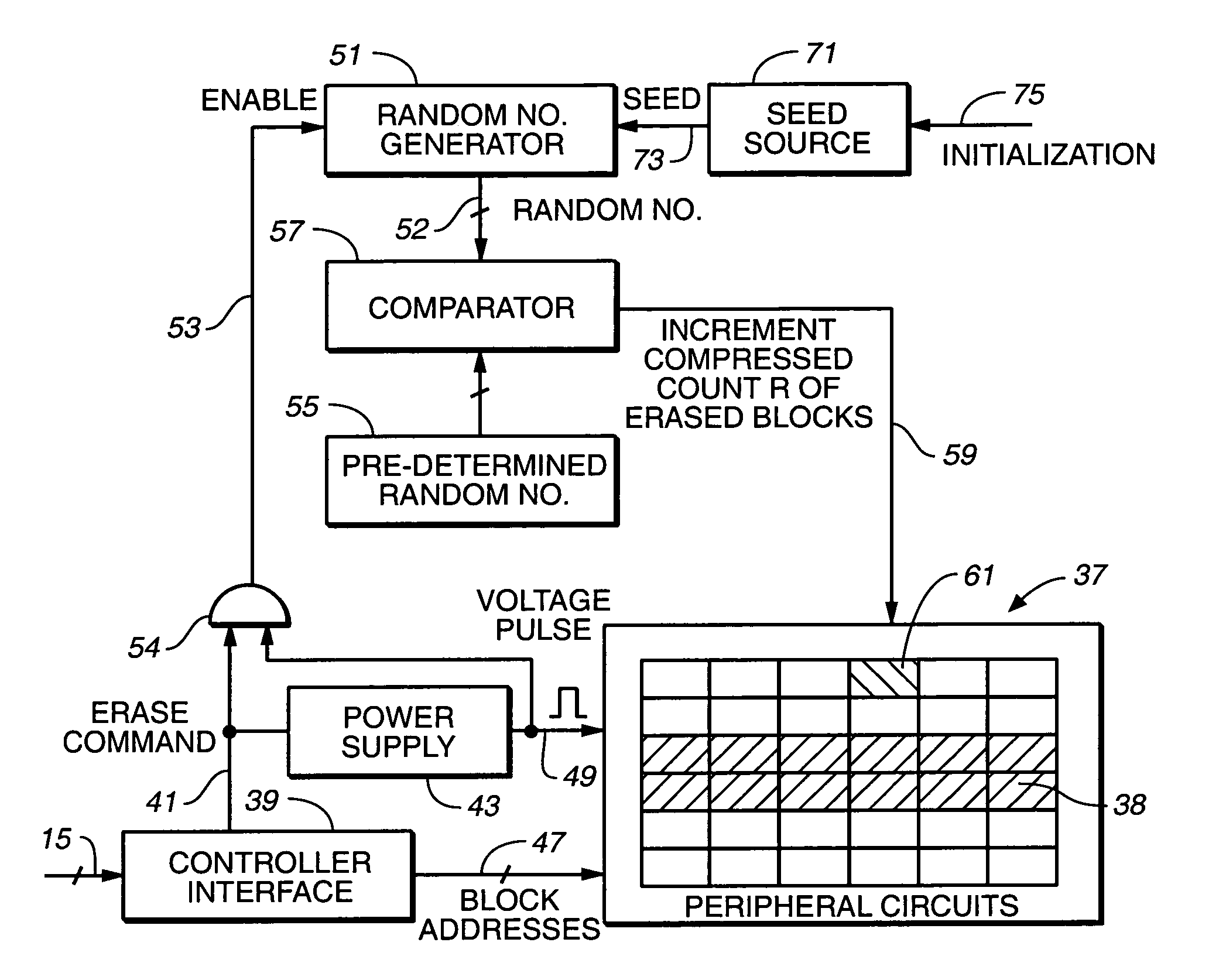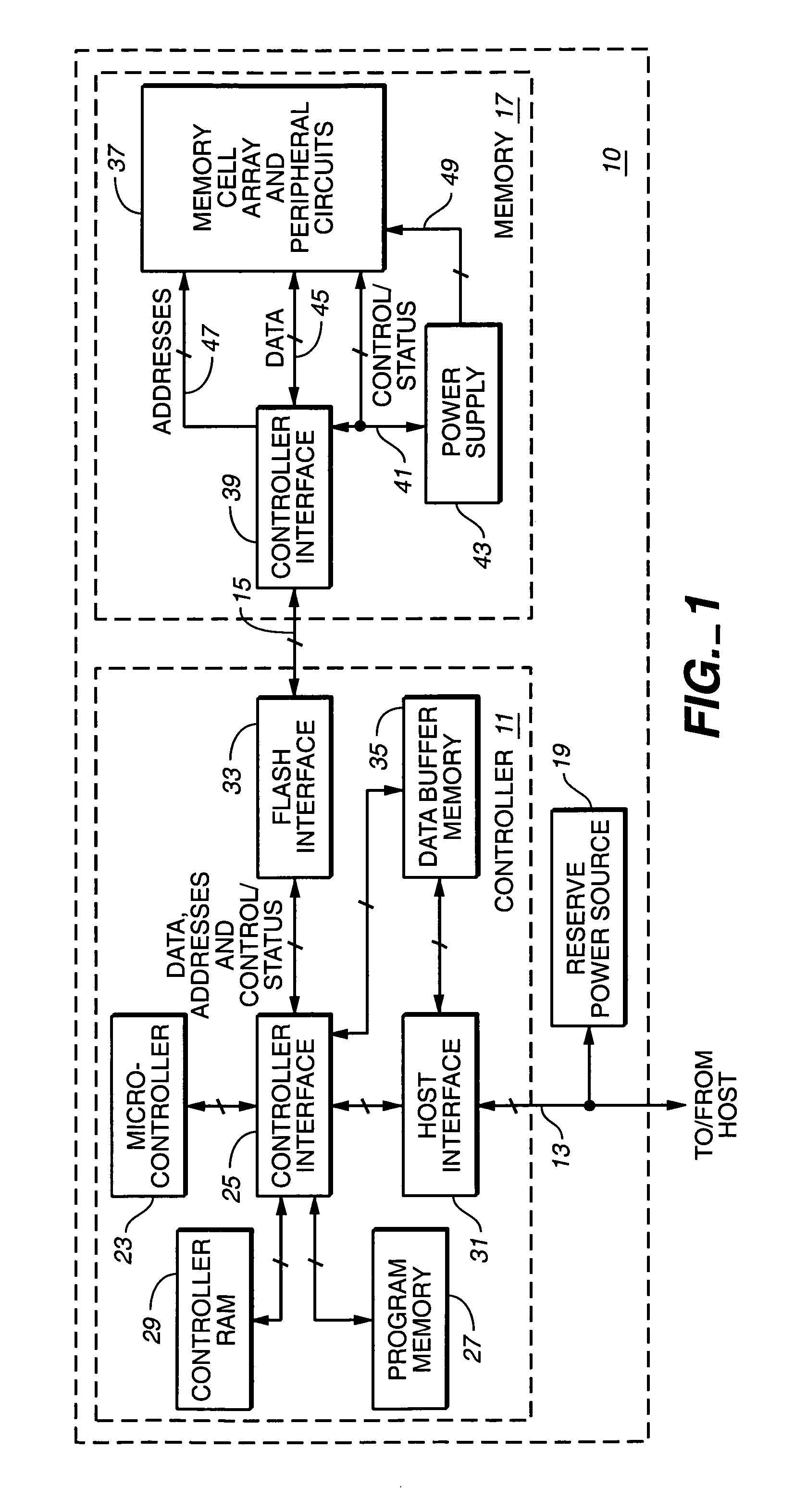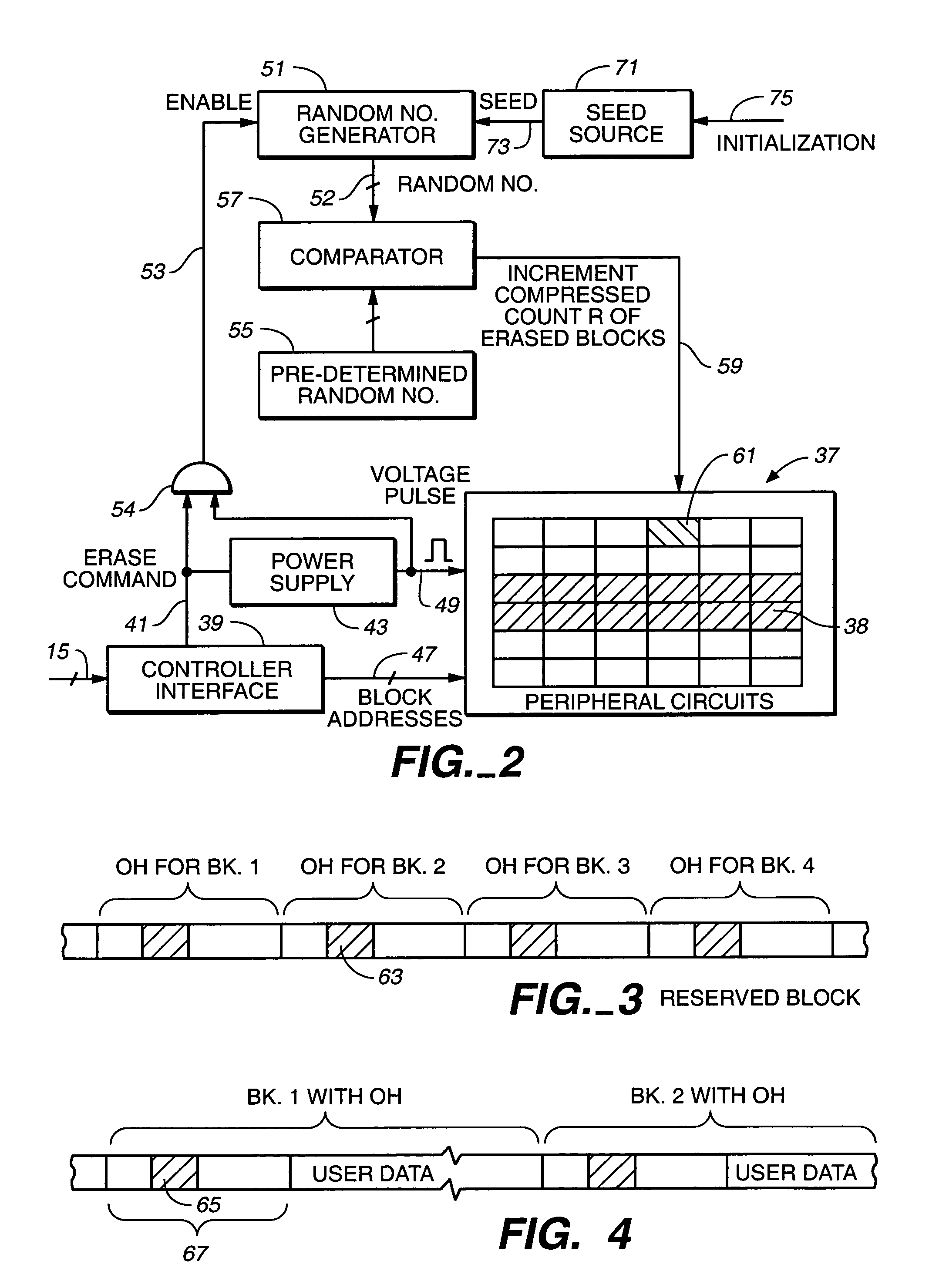Compressed event counting technique and application to a flash memory system
a flash memory system and event counting technology, applied in the field of event counting techniques, can solve problems such as the increase of relative accuracy
- Summary
- Abstract
- Description
- Claims
- Application Information
AI Technical Summary
Benefits of technology
Problems solved by technology
Method used
Image
Examples
Embodiment Construction
[0024]FIG. 1 is a diagram of some of the major components of a typical non-volatile memory system. A controller 11 communicates with a host system over lines 13. The controller 11, which may occupy its own integrated circuit chip, communicates over lines 15 to one or more non-volatile memories in parallel, one memory 17 being illustrated. The memory 17 includes a memory cell array and associated peripheral circuits 37, which may, along with a controller interface 39, be formed on a separate integrated circuit chip.
[0025]User data is transferred between the controller 111 and the memory 17, in this example, over the lines 15. The memory 17 is addressed by the controller. Specifically, the data bus within the lines 15 can be one byte wide. The memory system shown in FIG. 1 can be embedded as part of a host system or packaged into a card, such as a card following one of the card standards previously mentioned. In the case of a card, the lines 13 terminate in external terminals on the c...
PUM
 Login to View More
Login to View More Abstract
Description
Claims
Application Information
 Login to View More
Login to View More - R&D
- Intellectual Property
- Life Sciences
- Materials
- Tech Scout
- Unparalleled Data Quality
- Higher Quality Content
- 60% Fewer Hallucinations
Browse by: Latest US Patents, China's latest patents, Technical Efficacy Thesaurus, Application Domain, Technology Topic, Popular Technical Reports.
© 2025 PatSnap. All rights reserved.Legal|Privacy policy|Modern Slavery Act Transparency Statement|Sitemap|About US| Contact US: help@patsnap.com



